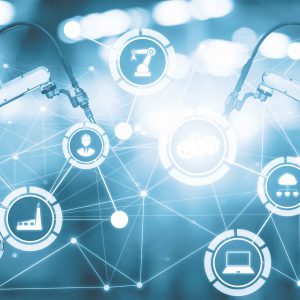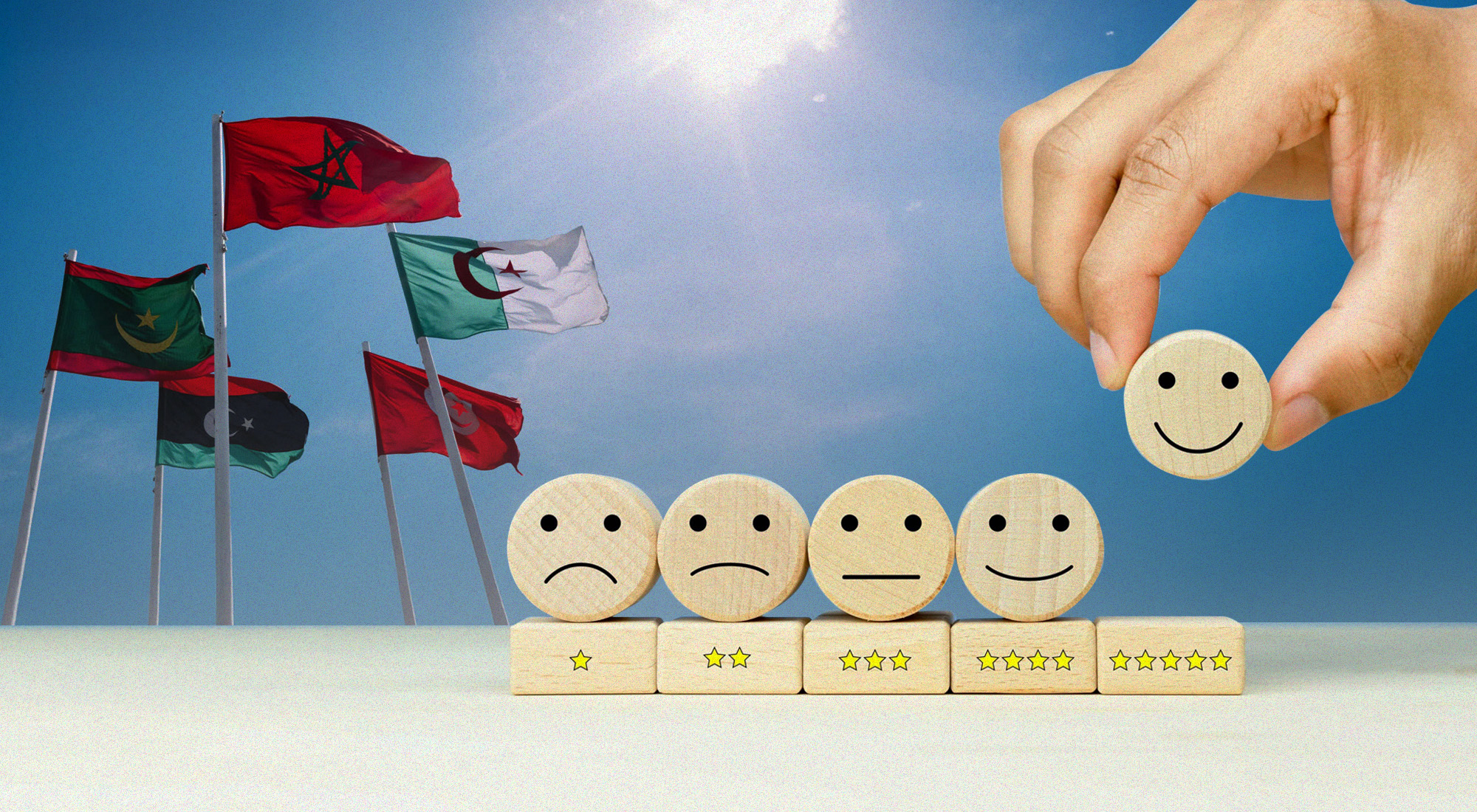Artificial intelligence (AI) is a collection of methods that have greatly influenced everyone’s lives in recent years. It affects what we see, buy, and think and governs how everyday products and services are made and provided. This article takes a brief tour of the AI potential and discovers ways in which it influences our lives. The author of this article has participated in the cases discussed here to present a realistic portrait of current AI affairs.
Any human being is a complex entity and therefore cannot be accurately described by an AI model. In aggregate, however, people behave in predictable ways amenable to mathematical description. An interesting case in point is the description of traffic jams in terms of thermodynamic physics, which leads to an actionable theory of traffic management to prevent jams (Weber, 2000).
Human material desires can be measured well by market statistics obtained from a variety of retail outlets. Often, they are a direct result of concerted advertising and marketing efforts by global industries that tell people what they ought to want, and thus they want it (Petropoulos Petalas, 2017). AI has been successfully used to model the complex interplays between existing trends, consumer behavior, the action of other market players, and the possible actions of a single player in the market. From such a model, we can derive the steps that a vendor should take to further its position.
The retail industry, in general, has probably adopted artificial intelligence the most. We are all familiar with various aspects of the digital transformation in this space as all of us are retail customers ourselves. When going to a website of a large retailer, we are often immediately prompted with a chat window asking us if we have any questions.
At the other end is an artificial intelligence natural language program chatbot that responds to our questions. If you ask questions relevant to the products, you may get a reasonable answer. These bots are helpful to both the company and the consumer because the consumer gets immediate responses, and the company doesn’t have to invest in human personnel. However, these chatbots are limited in the amount of information they can provide, and therefore they are only able to answer the simplest of inquiries. Beyond that, the consumer is required to phone the hotline.
The prices for various retail commodities can be adjusted either at regular intervals or in real-time. We are all used to the conundrum of purchasing airplane tickets, and it seems to us that the prices vary widely depending on the time at which we ask for the price and the details of when we wish to fly. The truth is that these real-time prices are computed by AI methods that have been trained on such query data and make their conclusions based on who you might be and how urgent your request might be. We obtain propositions to purchase some goods through retail websites because they are related to the goods we searched for.
This is an example of a recommender system, with information about what other customers did in the past and recommending what you might like. A subscription service like Netflix recommends movies to watch. On large retail platforms like Amazon, the recommender system suggests other products to purchase. Recommenders are probably the most prevalent AI models deployed today. These systems are interesting because they are technologically not highly sophisticated, and their accuracy requirement is not high. If you do not like the recommendation, usually no damage is done. If you do like it, there is an immediate benefit. Thus, even if the accuracy of a recommender system is relatively low, its commercial benefit to the retailer can be significant.
The snag is that recommender systems learn based on our behavior, and so they are somewhat of a self-fulfilling prophecy as well as systems that will reinforce our existing preferences. This is not always good, as exemplified by social media post sorting that prefers the most extreme posts to maximize viewership. An interesting recent spin on recommender systems is to include elements of what would be “good” to suggest rather than simply what the individual would “like.” This is important, for example, in educational platforms where the platform is supposed to drive the user to the edge of the comfort zone to improve skills.
Many AI applications apply to logistics. The physical part of logistics is the transportation of goods from one place to another. In that process, we need to decide on the route that the vehicles take. This route is typically a road with many stops for on- and offloading and must be scheduled optimally. Besides, the order of loading a vehicle becomes important. Imagine a container ship. The containers at the bottom of the stack should not have to be offloaded at the first port of call because that would mean offloading those on top and then reloading those containers onto the same ship, thereby wasting a lot of effort. Apart from the simple and obvious challenges of loading a vehicle and moving it from A to B on the right route, we have the challenges of operating the vehicle fleet to minimize the cost of fuel and its environmental impact.
Safety is always an important concern for logistics, and so the popular use case of AI, namely autonomous driving, is popular for the logistics sector also. Autonomous trucks, ships, and robots in factories lower the risk to human beings in the process, particularly when these activities take place in remote or hazardous environments. The scheduling of logistical activities depends heavily on scheduling that happened prior to logistics, namely manufacturing and after logistics, and the retail activities of these goods. Therefore, AI and logistics also include timeseries forecasting challenges.
Apart from the movement-related activities of logistics, there are activities inside logistical warehouses that AI can improve. Most activities in warehouses these days have been automated by using robots. For example, robots are used to put packages onto racks in warehouses and to extract them from the same rack. The packing problem of where to put these packages in such a way that they can be retrieved with minimal effort is a challenge for AI. Goods with a short shelf life that need to be put and retrieved very often should be put closer to the door. Products of medium-size and long shelf life can be put toward the back of the warehouse.
Logistics involves machinery, whether robots, trucks, ships, airplanes, or others. All such machines require regular maintenance and experience occasional breakdowns requiring the exchange of parts and possibly other repair activities. Companies have been doing scheduled maintenance or inspection for decades. A popular AI use case in the industry is predictive maintenance, in which we want a forecast that a certain type of equipment will break down soon. Maintenance engineers are alerted that they will need to engage in a preemptive maintenance activity before the equipment fails. One might imagine that repairing a truck while still at the warehouse is cheaper than repairing a fully loaded truck that has broken down on the highway.
Before goods can be transported, they must be produced. The manufacturing industry can be loosely broken into two parts from AI’s point of view. The first group is made up of production plants that manufacture. Those would include oil and gas processing facilities, power generation facilities, chemical plants, water treatment plants, and so on. The second group would include manufacturing facilities that produce discrete units of something. These would include the manufacturing of cars, telephones, laptops, household goods, and so on.
The continuous process plans are characterized by large equipment that processes some fluid that undergoes a mechanical, chemical, or biological transformation. We are optimizing a process that is related to physics or chemistry, and thus AI modeling reproduces the physical laws of the universe. The two most popular use cases are predictive maintenance, as mentioned above, and the optimization of the production process by the continuous alteration of setpoints, which are the values in the plant that its operators can adjust. This optimization’s goal would be either the efficiency, the production yield, or the financial profitability of the plant.
Different use cases apply because processes are dominated by a series of smaller machines for the discrete manufacturing plants, each of which accomplishes an independent, somewhat disconnected, task from the other machines in the process. This is readily experienced in a car manufacturing facility. For example, where there are different stations along an assembly line in which one machine does some welding, another machine puts rivets on the car. The third machine puts a separate part onto the previously existing part, and so on. Most of these activities are performed by robots, which have been pre-programmed to perform that specific task, and they expect to repeat that task at regular intervals without limit.
The most popular use case of AI for the manufacturing of parts is scrap tracking. All manufacturing processes of this discrete nature are characterized by the problem that the discrete unit either matches the product specifications or not. If a product does not match its specifications, it is scrap and therefore to be considered garbage. The sooner the manufacturing process can detect scrap, the sooner the part can be removed from the process. Therefore, the cheaper that piece of garbage will be because no further added value activities are being done on it.
One may detect scrap physically by including testing stations at various intervals in the manufacturing process. However, these can be augmented and made much more intelligent by analyzing the streaming data from all the production machines and judging in real-time whether the machines have performed correctly or not. Detecting scrap early helps exclude the already damaged parts from further processing and alerts the maintenance engineers that specific machines require a maintenance activity.
Before any manufacturing facility can work, it must receive raw materials. These raw materials are also produced by manufacturing plants and up the stream of the various manufacturing processes. Eventually, we arrive at the process of mining, where materials are extracted from the earth to lead to the first step of a chain of manufacturing processes that end with a consumer product.
Usually, the material we extract from the earth is not sufficiently pure to be used in manufacturing. Therefore, it must be made purer in the process of refining. For example, metal ores usually include various metals and non-metallic substances, so they must be separated into various categories after the metals are extracted. The processing of copper-rich soil produces copper and various other precious metals alongside a vast amount of left-over material that is of no practical use.
The use of AI in mining and has increased significantly over the last decade. The analysis of data to locate deposits is one of the primary use cases. The digging or drilling process to get to these deposits can also be optimized by AI. Again, predictive maintenance helps in the drilling process to ensure that we know in advance when the drill bit, drill string, or motors will break down.
The productive use of mining facilities is influenced by autonomous vehicles where we see ore being transported out of the mine by autonomously driving trucks that can operate under hazardous conditions 24 hours a day without impacting performance or posing any safety hazards to human beings. Refining the materials such as crude oil or mineral ores into their final product is like the continuous manufacturing processes referred to earlier and therefore subject to the same enhancements by AI. The purity of the product and the amount of effort required to achieve that purity can be optimized by AI modeling.
This leads us to the concept of the circular economy. At first sight what we have talked about so far seems to be a linear economy that starts with the upstream sector of mining, goes via manufacturing and logistics to the retail industry. At this point, the consumer picks up the finished article, consumes it, and then eventually, the article finds its way into the garbage. Depending on the item, it could be either re-used without much change or recycled in a manufacturing step to becoming another item. An example of such a recycling step is when old polyester clothing is turned into carpets, which can be recycled as doormats and so on. Of course, the product loses a little bit of its integrity at each recycling step, but it is far better to go through the steps than simply put the item into a landfill.
A critical step in the decision-making process is the separation of trash into its various categories. Decades ago, several countries transitioned to a process by which the consumer directly separates garbage into categories like plastic, paper, glass, biodegradables, etc. Nonetheless, mistakes are made, and many countries have not yet adopted such a process. Therefore, garbage processing facilities need to automate the separation of trash into these categories. Some of this can be done physically, for example, separating metal trash by using an electromagnet. However, some of these separations are difficult by physical means and are better attempted by AI to identify what individual pieces of garbage are. The actual recycling itself is then a kind of continuous manufacturing process.
We see in this way that the entire manufacturing and supply chain industry, rather than a linear process that begins and stops, is a continuous circle of manufacturing, transportation, and consumption going back to manufacturing and so on. AI has a role to play with most aspects of every one of these steps.
If we group the different major AI applications in this cycle, we come up with four distinct groups of models being used. Closest to the consumer is the recommender system that directly recommends to the consumer some product or service of possible interest. This is, at the present moment, possibly the most popular type of AI model in use. It is closely followed by the timeseries forecasting technology that will provide a forecast of what will happen to a system soon. Forecasting can be accurately achieved both for human behavior in aggregate as well as for the behavior of production machinery.
Timeseries forecasting includes the popular use case of predictive maintenance that has been mentioned above. Optimization of processes, by the change of available setpoints, is the third major application area of artificial intelligence. The fourth widespread use case is computer vision. This type of AI model allows an image taken by a digital camera to be interpreted by the computer as containing a certain type of item that can be identified and localized in that image. For example, we are familiar with photos of street scenes where the AI model identifies road signs’ location and identity.
Having taken a long journey around the manufacturing supply chain and retail areas of life, let us get closer to the individual by examining the healthcare industry. The mode of the healthcare industry has long been that the person would go to a doctor when they feel unwell to get a diagnosis and a prescription for a medication to feel well again. This process suffers from two problems. The first is that the interaction between the individual and the healthcare system occurs only when the person feels unwell. This is sick care instead of health care. The second is that the primary output of the system is a prescription for medication.
AI can be used to diagnose diseases with high confidence. It is especially based on computer vision algorithms that take as their input medical imaging technologies such as the x-ray, MRI scan, CT scan, or similar technologies. AI can detect the presence or absence, location and size of tumors, cancers, and various conditions and diseases that should not be present. We note in passing that the diagnosis accuracy of many individual doctors is approximately 80 percent, while the accuracy of diagnosis for computer vision algorithms is usually 98 or 99 percent. Therefore, even in standard medical practice, obtaining a diagnosis can be made accurate and rapid AI use.
Certain wearable technologies such as smartwatches and other smart sensors that measure simple quantities in the human body continuously, such as the pulse, blood glucose, or the steps you take while walking enable AI algorithms to compute some simple but vital statistics about your health and well-being. These statistics, combined with recommender systems, can ask you to perform certain activities and help you stay well longer so that you do not need to diagnose any condition.
It is particularly in the interaction between the maintenance of a healthy body and mind that AI can play a big role in keeping an individual out of the medical system. By tracking your lifestyle, analyzing it continuously, giving recommendations on what to do, AI can help you be a healthier version of yourself. It has become apparent in recent years that the individual’s mental attitude and emotional well-being have direct and significant ramifications on their physical health.
AI can detect a person’s emotional state based on a photograph or short video of that person’s face. AI can detect stress levels by analyzing your voice. The level of attention or concentration versus the levels of fatigue can also be detected by AI-based on the tracking of eye movements of the individual. This has recently led to driver monitoring tools in more intelligent cars to detect states in which drivers should not be driving. We see that AI has a significant role to play both in maintaining your health as well as restoring you to health.
There are associated technologies that are not AI but, together with AI, can enable broader use cases. Primarily, these are virtual or augmented reality, 3D printing, and drones. Virtual or augmented reality creates a 3D digital environment, which is made visually available to a human operator and can allow various modes of interactivity. An example is a conference in which every person is at home, but they all can see the three-dimensional representation of themselves, all the others, and the conference building. They can be used in the industry in various ways. They can be used to communicate directly to the consumer via conferences or fairs. Engineers can use them in plants to operate and maintain their equipment. Operators can use them to operate equipment or vehicles remotely.
3D printing has become an interesting technology in that parts no longer need to be kept on stock but rather can be produced fully automatically on-demand and then installed. This significantly lowers warehousing costs and logistics costs as the product can be made on-demand and as a single item, whereas oftentimes, with manufacturing processes, we must order a significantly larger lot size than just one.
Drones have enabled many use cases that involve AI, mostly in the form of computer vision. The drone is a device that can fly to areas that might be difficult or hazardous for the human being to get to, such as the top of a distillation column in a refinery. It can then take photographs of that location and transmit them to either the human operator or an AI computer vision algorithm responsible for detecting any unusual situation. In this way, drones have been responsible for significantly reducing maintenance costs and safety hazards in the manufacturing industry.
AI can play a significant role in two areas soon. If we are going to talk about new technologies over the next decade, I believe AI will contribute the most toward these two areas. In the area of healthcare, I predict that AI will be much more common and prevalent in the diagnosis and treatment of diseases. It will also be much more common in preventative healthcare systems that seek to keep the individual healthy by assisting and advising the individual on what actions to perform and what actions not to perform. It will also be helpful for mental and emotional health by detecting emotional states and suggesting certain activities, for example, meditation, that will help restore and improve mental health.
Finally, AI can make a big difference in education. The traditional mode of education in which a teacher addresses a classroom of many students, who listen and hopefully absorb some of this knowledge, is becoming increasingly suboptimal. AI can provide adaptive learning, which senses the methodology that is best for an individual student (for example, visual versus auditory learning) and the speed at which this individual is currently learning. It can therefore adjust the curriculum to the learning needs of the individual. Through natural language processing, an AI system can also act, at least in part, as the teacher. The student would be able to ask questions of the AI teacher and receive a sensible response in most cases. This could be particularly useful in underserved areas by educational institutions or in remote areas where students have to travel a long way to reach an educational institution.
In conclusion, AI is a series of mathematical models that produce an answer to a question. This question could be to forecast the evolution of a number over time, identify an object in a picture, generate a language response to a certain question, etc. These systems have been put to many diverse uses in mining, manufacturing, supply chain, retail, healthcare, and other industries, ultimately benefiting us all. AI is not a threat, even though it is sometimes portrayed in such a light in entertaining Hollywood movies.
AI is here to stay and will grow in its influence and its pervasive use over the next few years. Even though you may not realize it, your personal life is influenced directly by several AI systems multiple times every single day simply by the advertisements you see, the television shows you watch, the products you buy, the search results on your computer, and several other activities that you perform every day.
Apart from technological evolution that makes AI better and more useful, there are two concepts in the research on AI that have risen to prominence lately. The first is explainability, which seeks for the AI system to explain why its answer is what it is, alongside the answer itself. This was originated in the context of AI systems that decide whether to approve a bank-loan application and the applicant asking why it was rejected. In recent times, it has become apparent that an explanation for an AI result is desired and useful in many different circumstances.
The second is AI Ethics which is whether the application that AI is put to is ethical or not. In some cases, the small percentage of incorrect AI results produces so much damage that the entire application should be discontinued. Sometimes, the damage is financial and sometimes personal. If, for example, a facial recognition system trained only on Caucasian faces is used on the whole of a diverse population, it will make errors in judgment on those who do not have Caucasian faces. For those groups, it is therefore unethical to be subjected to that AI.
We must be careful that we use AI only within the confines of the circumstances for which they were made. Like any tool, AI systems have a restricted, usually very well-defined, range of applicability.
Maslow, A. H. (1943). A theory of human motivation. Psychological Review, 50(4), 370-96.
Bostock, David (2000). Aristotle’s Ethics. New York: Oxford University Press.
Weber H., Mahnke R., Kaupužs J., Strömberg A. (2007) Models for Highway Traffic and Their Connections to Thermodynamics. In: Schadschneider A., Pöschel T., Kühne R., Schreckenberg M., Wolf D.E. (eds) Traffic and Granular Flow’05. Springer, Berlin, Heidelberg. https://doi.org/10.1007/978-3-540-47641-2_52
Petropoulos Petalas, D., van Schie, H., & Hendriks Vettehen, P. (2017). Forecasted economic change and the self-fulfilling prophecy in economic decision-making. PloS one, 12(3), e0174353. https://doi.org/10.1371/journal.pone.0174353








